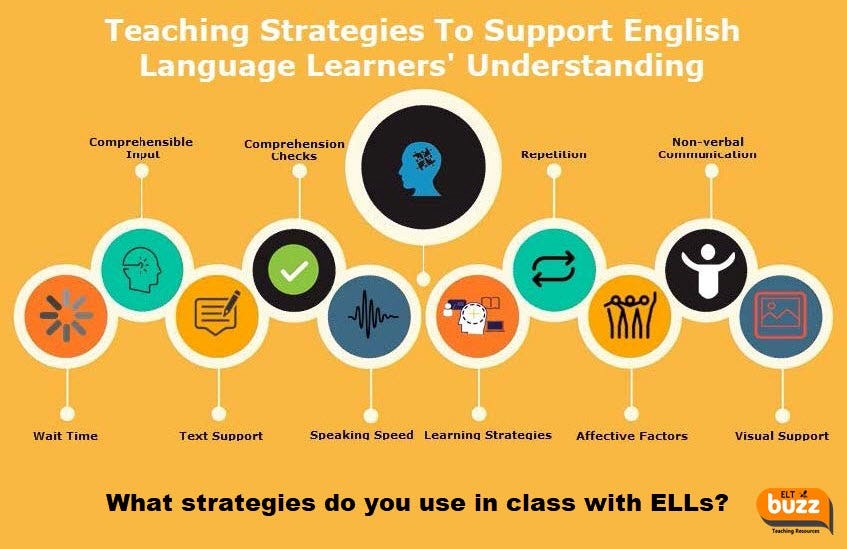
5 Ways To Help Students Develop Body Language In The ELT Classroom
12th February 2024
Research reveals that 50-80% of the communication happens through non-verbal communication.
Teaching body language to students is a lot of fun and highly helpful to incorporate into your English language training. Then why is it so underappreciated in the ELT community? Although there are certain commonalities between cultures, we may assume body language is a transferrable ability from learners' first language. But this is something that takes practice and experience to become second nature. Read on to learn what body language is and how you can develop body language in the ELT classroom.
What Is Body Language?
Body language is the use of non-verbal cues and gestures to relay information to students correctly. Teachers who have pursued advanced qualification in ELT use non-verbal communication for the following purposes:
- To reinforce or demonstrate something
- To initiate student responses
- To manage disruptive behavior
- To organize students for an activity
- To mark transitions between lessons
- To give approval or disapproval
Hey, do you follow us on Social Media? We regularly share upgraded educational content, tips, feedback and more. Check us out by clicking the profiles here - Facebook / Twitter / LinkedIn / Pinterest / Instagram / YouTube
What Are The Different Types Of Body Language Used By Teachers

Some of the most commonly used features of body language are as follows:
- Facial Expressions
This is arguably the most evident body language component. A vast spectrum of emotions may be expressed through facial expressions. Recent reveal that people can reliably identify up to 21 distinct emotions from facial expressions.
- Posture
Another very essential aspect of body language is posture, which may express a variety of emotions, including anxiety, insecurity, boredom, and dominance. A sincere grin along with folded arms and a cocked head might convey a whole different message than just folding your arms and tucking your chin forward.
- Proximity
The degree of trust someone has in you may be determined by how close they are to you or how close you are to them. However, levels of acceptable closeness can differ greatly amongst cultures. Some feel safe making physical touch with somebody they don't know well, while others are a little more reserved.
- Eye Contact
About 60% of the time, you should be making direct eye contact with someone to show that you are interested in what they have to say. You can be sure that someone isn't listening to you if they aren't looking at you. The majority of cultures avert their eyes as a display of respect.
- Voice
Many different emotions, many of which can be quite difficult to manage, can be revealed via our voice. Based on tone, pitch, speed, and loudness, you can identify up to 24 distinct emotions from a sample of more than 2000 vocal bursts.
- Gestures
When we speak, our hands can express a variety of conscious and subconscious messages, such as frustration (clenched fists), wisdom (fingertips touching), dominance (arms outstretched, hands open, palms pointing downward), openness (hands open, palms pointing upward) and a host of other emotions.
How Can You Help Your Students With Body Language?
Here are some tips to teach body language to your students and help them appear more confident:
- Silent Viewing
Silently watching videos is an excellent way to boost awareness of body language. Short snippets of daily soap show drama may work wonders. Play the videos quietly and observe what knowledge the children may learn simply by observing how individuals interact. Encourage them to consider what it is that they are observing that is providing them with this knowledge.
- Comparative Viewing
Finding similar video clips from the target culture and the culture of your students and comparing them may be quite illuminating for them. For example, use a scene from a US comedy series that showed people talking in a coffee shop. When students compared it to a comparable one from Spain, they were astounded by how different they were in closeness.
- Dialogues And Role Plays
Give your students role plays or conversations to rehearse. You may have them act out the scenes first, then say the lines out loud. They may use this to help them prepare the movements and facial expressions they will use while speaking with the individual in person. The interviewee can benefit greatly from miming a job interview role play by concentrating on their posture and facial expressions instead of having to concentrate on the words and what they need to say.
- Mirroring
Assign learners to practice speaking in the same way as the other person. Mirroring someone else is a fairly typical technique for us to express empathy, rapport, or even infatuation. Students can be seated face-to-face in pairs. Request that student A use their posture, gesture, or facial expression to convey an emotion, and then urge student B to mimic those same motions.
- Attitude Drills
You might frequently use drill words or phrases while teaching new language to kids to support their pronunciation and confidence with the terms. These drills are often conducted in unison by the entire class, but you can model other emotions for the children to portray by asking them to speak the lines in the voices of anger, sadness, happiness, excitement, etc. This increases the pleasure factor of the drills and aids in the development of a wider variety of vocal expressiveness in the kids.
Prepare Your Students For The Future
Therefore, it doesn't have to be hard to improve how you and your students utilize body language, and it may even assist in providing students with a richer learning experience. Equip yourself with Online TEFL Courses to have a fair idea about the techniques and methodologies of teaching English language learners. You can use any of the suggestions mentioned above to help your students develop positive body language.
We believe education should be accessible for everyone. That’s why we don’t charge for our blogs. Find the right course that will help you in your career with us, contact us at +6621056101. You can mail us at act@asiancollegeofteachers.com
Written By : Laura Taylor




